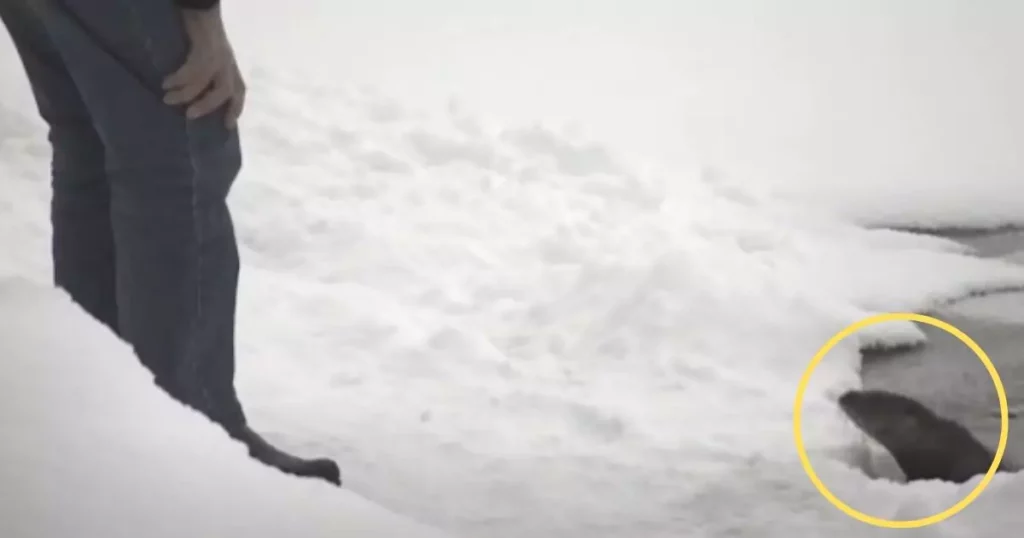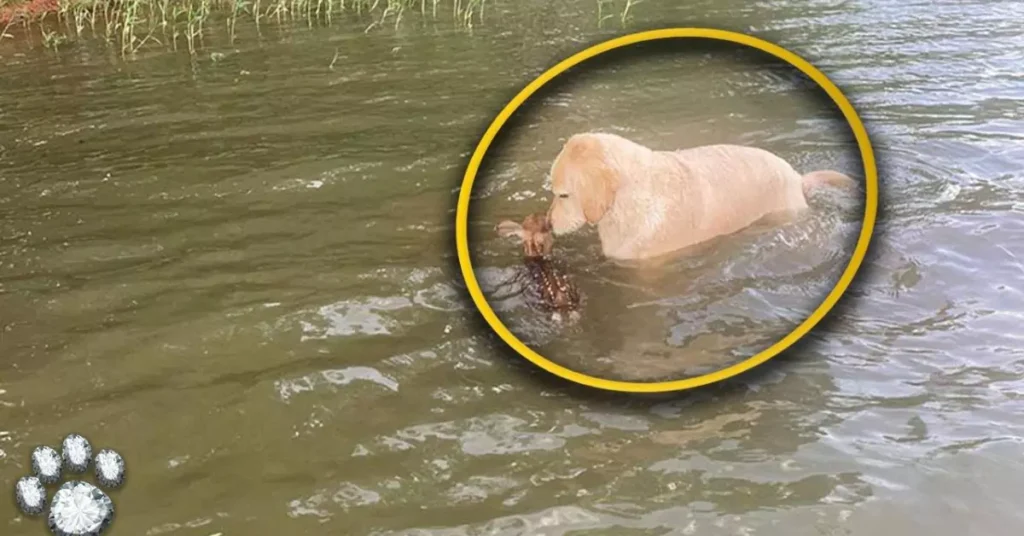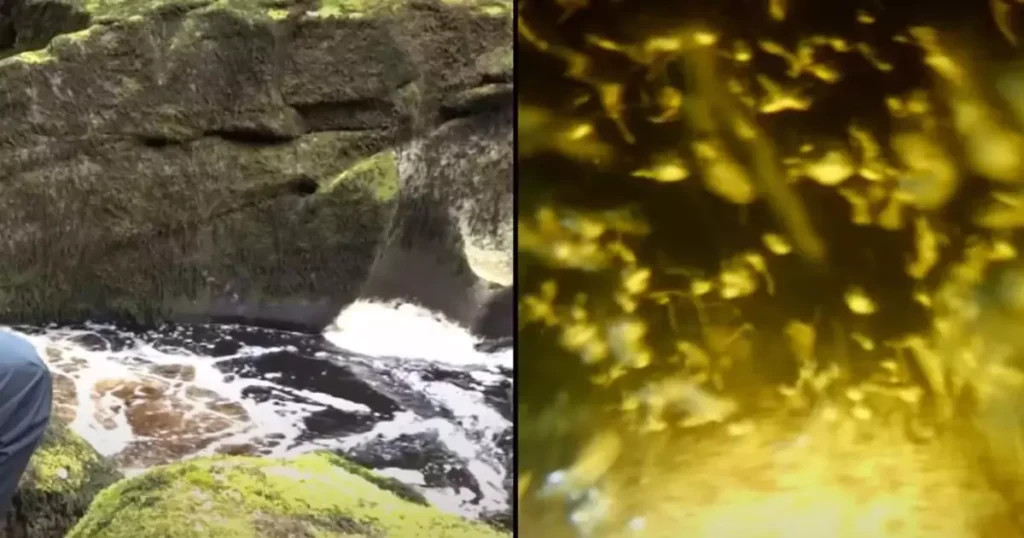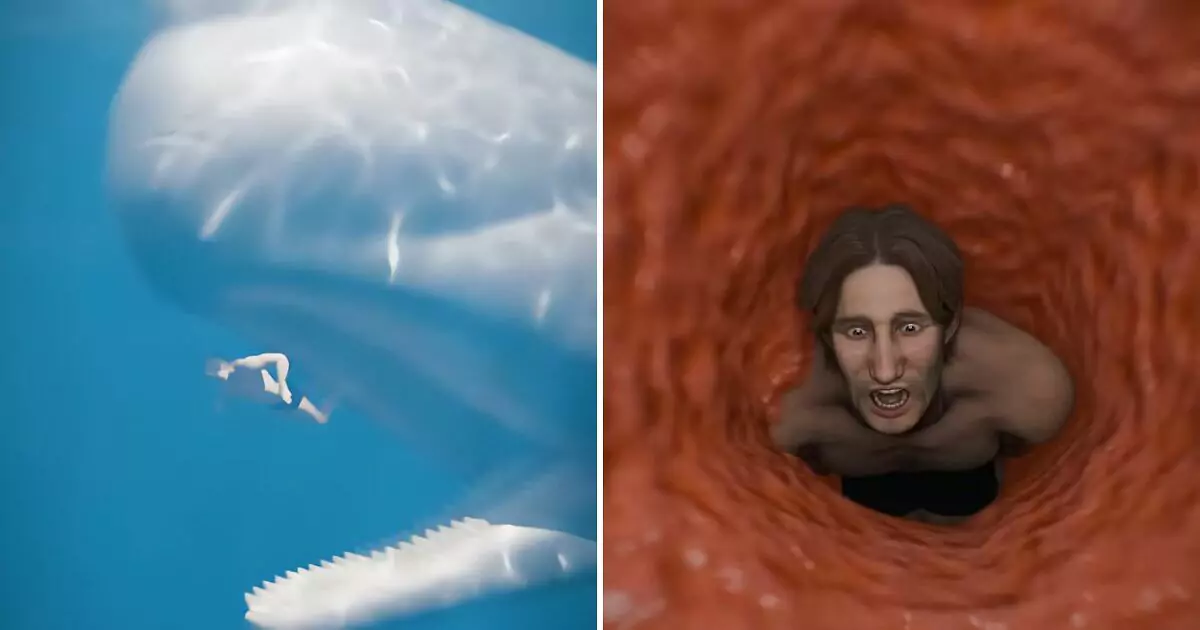
A recent simulation has shocked viewers by demonstrating the gruesome fate of being swallowed by a sperm whale. While the chances of encountering such a scenario are extremely low, the video has reignited oceanic fears and made many reconsider swimming in the sea.
Chilling Details of the Simulation
The Zackdfilms YouTube channel has produced a striking simulation. It shows what happens when a person is swallowed by a sperm whale. In this simulation, a dummy with a permanent screaming face is shown being squeezed down the whale’s massive throat. The video continues as the dummy travels through the esophagus and into the whale’s stomach chambers, which are filled with potent digestive acids.
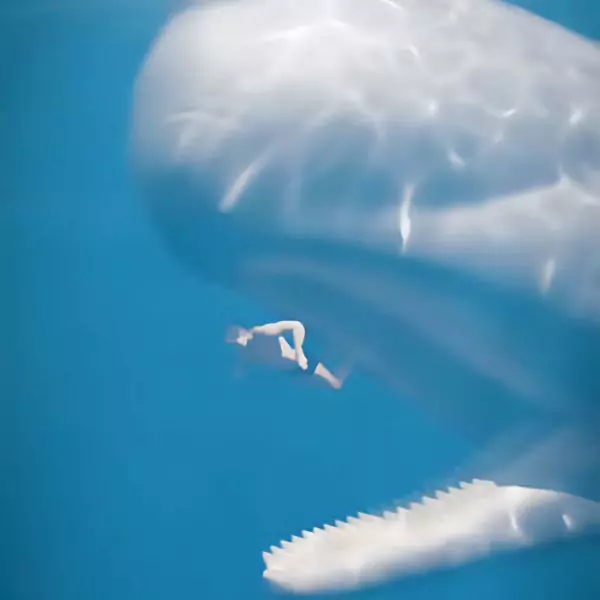
The narrator explains that these acids would immediately start breaking down the body. Additionally, the lack of air inside the whale would lead to suffocation. The simulation emphasizes how dark and claustrophobic the inside of a whale would be, which adds to the terrifying nature of the scenario.
Viewer Reactions and Online Comments
The simulation has sparked intense reactions from viewers. Many have described the content as unlocking new phobias. Comments on social media highlight fears about the darkness inside the whale and the inescapability of the situation. One viewer remarked, “This channel gives me unlocking phobias.” Another added, “It’s scarier because there’s no light and the smell—no one would hear you ask for help, and you’d just rot there.”
Real-Life Incident
The video also references the real-life story of Michael Packard, a lobster diver from Massachusetts. In 2021, Packard was briefly swallowed by a humpback whale while diving. Unlike the grim fate depicted in the simulation, Packard was released within seconds and survived. His experience illustrates the rarity of such incidents and highlights that they are unlikely to result in the horrifying outcome shown in the simulation.
Scientific Insights into Whale Anatomy
The simulation relies on accurate scientific principles to portray the internal environment of a sperm whale. Here’s a closer look at the science:
- Feeding Habits: Sperm whales eat squid and small fish, not large mammals. Their anatomy is adapted to filter these smaller prey.
- Digestive System: A sperm whale’s stomach contains several chambers with strong acids to digest its high-protein diet. The simulation accurately shows how these acids would break down human flesh.
- Oxygen Levels: The simulation emphasizes that there is no breathable air inside the whale, leading to rapid suffocation.

Debunking Misconceptions
The simulation also clears up misconceptions about whale behavior. Sperm whales do not usually attack humans. Incidents like Packard’s are rare accidents rather than intentional attacks. Understanding whale behavior helps alleviate unnecessary fears.
Precautions and Safety Tips for Ocean Explorers
Although the likelihood of encountering a whale in this manner is extremely low, the simulation serves as a reminder of the ocean’s potential dangers. Here are some essential safety tips:

Understanding Marine Life
- Respect Wildlife: Always maintain a safe distance from marine animals. Disturbing them can provoke unpredictable behavior.
- Educate Yourself: Learn about marine biology and the behavior of ocean species to recognize signs of distress or aggression.
Swimming and Diving Safety
- Use the Buddy System: Always swim or dive with a partner. Having someone with you can be crucial in an emergency.
- Join Guided Tours: For those unfamiliar with a region, guided tours provide safety and expertise from professionals.
Preparing for Emergencies
- Emergency Training: Basic first aid and rescue training are important for divers and swimmers. These skills can be life-saving in underwater emergencies.
- Safety Gear: Equip yourself with appropriate safety gear, such as diving suits, life vests, and emergency location devices.
Balancing Fascination with Caution
The simulation of being swallowed by a sperm whale combines our fascination with the ocean’s mysteries with a cautionary tale about its potential dangers. While the scenario is highly improbable, it serves as a reminder of the ocean’s power and unpredictability.
By understanding marine life, following safety protocols, and preparing for emergencies, swimmers and divers can explore the ocean with greater confidence. This balanced approach allows us to enjoy the ocean’s wonders while respecting its potential dangers. In doing so, we ensure that our interactions with the ocean remain both rewarding and safe.













